Advanced Deck Building
Welcome back friends! I'm PsYcHo, author of A Beginner's Guide to Deck Building. Here, I'm going to go over some deck building techniques that are a bit more advanced. Deck structures, optimizing for 60 card points and getting an advantage in the early game; how to most effectively use Flex items to make sure your build is prepared for anything; designing your build order for efficiency in-game; and a brief discussion on Throw-away Items. As with my previous guide, we'll be using a Sparrow deck for any example, listed above. (She's my main, if you hadn't guessed already).
This guide assumes you have an advanced knowledge of the way builds work in-game, the most effective combination of attributes for your chosen character and everything discussed in my previous guide (linked above).
Right, let's get started!
Contents
- Deck Structures, Optimizing for 60 Card Points and Getting an Early Advantage
- Build Orders and Discarding Items
- Using Flex Items Effectively
- Throw-Away Equipment
1. Deck Structures, Optimizing for 60 Card Points and Getting an Early Advantage
That's quite a long title! Don't worry, these things slot together quite nicely. So what do we mean by a Deck Structure?
A Deck Structure describes the distribution of card points across your equipment. The purpose of using a deck structure is to make sure your card points are distributed across your attributes in the way you want, while also utilizing the full 60 card points and getting as much of an advantage in the early-game as you can.
That's a mouthful, but let's look at some common deck structures, the all-10 structure and the 9/10/11 structure, and discuss the pros and cons of each.
The All-10 Structure
The All-10 Structure is what it says on the tin, each equipment, when fully upgraded, costs a total of 10 card points. 6 Items with 10 card points then gives us the full 60 card points. So what does that look like?
Say we take Windcarver Blade as our first item, we want to distribute Attack Speed and Physical Damage as evenly as possible, so for the upgrades we add Major Kinetic, Strike, Strike. That's 3 + 2 + 2 = 7. Add on the cost of the equipment itself we get 7 + 3 = 10. If we use this format for all 6 equipment, we utilize the full 60 card points in an efficient way, while adding 3 points of Kinetic and 4 points of Strike, as even a spread as we can get with this format.
But say we Kinetic isn't as important to us as Strike, for example if we're an ability-focused Physical Damage hero, we might want to skew out attribute distribution towards Strike while still keeping a little bit of Kinetic. Well then we can take Windcarver Blade - Major Strike, Strike, Kinetic. This gives us 5 upgrade points on Strike and 2 on Kinetic.
If we continue in this manner, with 6 10-cost items, we'll have a build that will take us all the way to the end-game with 60 card points worth of items.
The 9/10/11 Structure
The 9/10/11 Structure is a little more complex. Taking 2 equipment which cost 9, 2 which cost 10 and 2 which cost 11. Adding to the full 60 card points.
Again, we'll take Windcarver Blade as our first item and give it a distribution of upgrades skewed towards Strike, costing a total of 6 card points. Strike, Strike, Kinetic.
This gives us 9 total card points spent so far. Now we want a 10-cost equipment. So we'll take Blade of Agora - Major Strike, Strike, Strike.
And finally we'll need an 11-cost equipment. Fountain Spike - Advanced Mana, Major Strike, Strike.
This gives us 30 card points total. If we then take another 9-cost, 10-cost and 11-cost equipment we'll add to the full 60 card points. So what's the point of this? Which structure, if either, should we choose?
Deciding on a Structure
Let's compare these structures, see if we can get to the bottom of what each one is about.
Early Game Advantage
I bet you were wondering when this was going to turn up. The 9/10/11 Structure gives us a notable early-game advantage over the All-10 Structure. By having the first 2 Items cost less than the rest, we can make use of their Fully Upgraded Bonus sooner. Giving us an advantage in our lane, resulting in better farming and faster accumulation of card points so we can upgrade even more even faster! The 9/10/11 Structure is ideal for Carries or Assassin's that need that little boost in the early game to start picking off enemy heroes (Hence why we've used it in our example Sparrow deck), but what it lacks is something we're going to talk about next.
Flexibility
While the 9/10/11 Structure gives us an early-game advantage, it insists that we take the 9-cost items first, then the 10-cost items, then the 11-cost items. This is fine if your build is perfectly tailored to your play style and you'll never want to buy items in a different order, but what about the rest of us? The All-10 build, since every equipment costs the same, is completely flexible. You can take any equipment in any order, ideal for tanks and supports that need to adapt to the game state.
So in summary, the 9/10/11 gives us an early game advantage while sacrificing flexibility in the build, while the All-10 has no early-game advantage but is completely flexible.
These aren't, of course, the only structures your deck can take. What about a 6/10/14 build? That has HUGE early game potential, but there's a distinct problem with it which we'll talk about now.
Structures Affecting Attribute Distribution
The 6/10/14 build, as well as the 9/10/11 build to a lesser extent, has a problem. The first equipment that we take, the 6-cost equipment, is likely going to have attributes that are core to our build, like Strike is to our Sparrow build. The problem, then, is that we're using less of our total 60 card points on the core attributes our build needs the thrive, while putting more of our card points into those less important late-game additions. For example, if we take Pendulum of Lords as our 5th card, and add the upgrades: Perfect Mana, Celestial Health and Advanced Chrono. We don't need NEARLY that much Mana and Health, we're a Carry! But we don't want to put Health and Mana earlier in the build either, because we don't need it yet, we want to just build damage and crit chance in the early/mid-game. So our hands are tied, we either take Pendulum of Lords earlier than we want to, or invest more card points into it than we need to. The All-10 build doesn't suffer from this problem, the 9/10/11 build suffers from it to a lesser extent, only use a build like the 6/10/14 when you can guarantee you're getting the full benefit out of it.
2. Build Orders and Discarding Items
Now that you've decided on a structure for your deck to take, it's time to look at your Build Order.
A Build Order is the order in which items are bought, when the ideal time to go back and buy the items is, and when you need to discard your starter items to free up card points/space
Before we dive into timings, I want to tell you about a habit I've got into while designing decks, something I think will be extremely beneficial for you to start doing, and that is to write down my build.
When you make a new deck from scratch, it's hard to remember which order the items go in and which upgrades apply to which items, especially when the upgrades start overlapping. So I have a notepad document with all my current builds in. This is how I format them, using the Sparrow deck as an example:
Sparrow Carry
The Warlord
Health Potion, Mana Potion, Scout's Ward
First Item:
Windcarver Blade - Kinetic, Strike, Kinetic
Second Item:
Spear of the Rifthuner - Wound, Wound, Wound
Third Item:
Blade of Agora - Major Strike, Strike, Strike
Fourth Item:
Windcarver Blade - Major Kinetic, Strike, Kinetic
Fifth Item:
Spear of the Rifthunter - Major Wound, Major Strike, Wound
OR
Adamant Edge - Greater Health, Major Strike, Health
Sixth Item:
Pendulum of Lords - Advanced Mana, Advanced Chrono, Health
OR
Fountain Spike - Advanced Mana, Major Strike, Strike
Now I can glance over to my other monitor, or look down at the piece of paper I wrote it on (Depending on whether you HAVE another monitor to put it on) and see exactly what's suppose to go next in my build. Easy!
So let's talk about timings.
These are, of course, only rough guidelines, during an actual game you may not be able to back at the ideal time, or be forced to back before you're ready to. This is fine, but it's important we discuss the ideal timings so we can take advantage of them when we can.
Let's look at the build order and timings for our example Sparrow deck.
Take Health Potion, Mana Potion and Scout's Ward on spawn.
Back on 3 and buy Windcarver Blade.
Back on 6 and fully upgrade Windcarver Blade.
Back on 9 and buy Spear of the Rifthunter and fully upgrade (Spear of the Rifthunter has such a small Crit Chance on it's own that abandoning our lane at 3 to buy it really isn't necessary)
Back on 6 and buy Blade of Agora and Major Strike.
Back on 6, discard Scout's Ward, fully upgrade Blade of Agora and buy Windcarver Blade.
From then on the build order is entirely dependent on the game state and whether or not I feel I can afford to discard potions to upgrade Windcarver Blade earlier.
There is no reason to not buy Scout's Ward / Harvester's Key on spawn. Even if you discard them on your first back, they might be useful for the initial part of the game. Scout's Ward is especially important for a Carry with no escape like Sparrow, since a gank from the jungle means certain death if you're not expecting it.
3. Using Flex Items Effectively
Flex Items are an extremely valuable resource, especially for Support or Tank builds that need to adapt to the game state in order to survive and do their job properly.
As an example, we're going to stray away from our example Sparrow deck and look and something a bit different. A Steel Support build.
Steel Support
The Centurion
Health Potion, Mana Potion, Scout's Ward/Harvester's Key
First Item:
Adamant Edge - Health, Strike, Strike
Second Item:
Pendulum of Lords - Advanced Chrono, Greater Health, Mana (We're going to drop Health Potion and Harvester's Key at this point to get some of the bigger upgrades out faster)
Third Item:
Tempered Plate - Guard, Guard, Health
OR
Tuned Barrier - Barrier, Barrier, Health
Fourth Item:
Windcarver Blade - Major Kinetic, Strike, Strike
Fifth Item:
Tempered Plate - Greater Health, Guard, Guard
OR
Tuned Barrier - Greater Health, Barrier, Barrier
Sixth Item:
Pendulum of Lords - Advanced Chrono, Greater Health, Mana
This is a 9/10/11 build with a slightly different Build Order. I decided I was going to drop Scout's Ward/Harvester's Key and the Health Potion at the second equipment so I could get the Advanced Chrono out faster, since supporting with Steel requires fairly flexible and regular use of his abilities.
The third item here is a perfect example of how Flex items can be used most effectively. We have Tempered Plate with a focus on Guard, and a Tuned Barrier with a focus on Barrier. What's the difference? One has Physical Defense, the other has Energy Defense. It's important to ALWAYS have Tuned Barrier as a Flex item for Tempered Plate because the enemy team might be mostly made of Energy Damage, their carries might all scale with Energy Damage, and you need to be able to adapt to that.
Another example of using Flex items effectively is to build a bit of optional Health into every Carry build. Why? In case you're losing. Defending without any Health is hard, very hard. If your team is winning and applying pressure to their core, you don't need the extra health, you control the game and therefore can use your positioning and zoning to stay alive. You don't have such luxuries when your opponent is applying the same pressure to you and therefore you need to build survivability in other ways.
4. Throw-Away Equipment
This is an interesting topic. I want to put forward a disclaimer before we start talking about this that I haven't yet experimented with this concept at all, and therefore everything I'm going to talk about is purely theory, and is a theoretical way of preventing irregular attribute distribution in a structure like 6/10/14.
Throw-away Equipment are temporary equipment that allow you get the benefit of Fully Upgraded Bonuses without worrying about poor attribute distribution, as discussed in the Deck Structure section of this guide.
Let's look at any example. Say, at the end of the game, I want to have a 14-cost Windcarver Blade and a 6-cost Pendulum of Lords, yet I want to be able to build into a 6-cost Windcarver Blade in the early game. I can do this using a throw-away Windcarver Blade.
I back on 6, take a Windcarver Blade and upgrade it with Lesser Strike, Lesser Strike, Lesser Kinetic. I have my 6-cost equipment and get to utilize it's fully upgraded bonus.
In the mid-game I'll back on 9 points, discard the 6-cost Windcarver Blade and add a new Windcarver Blade with Vicious Kinetic, Vicious Kinetic, Major Strike.
Then I can back on 6 points and take Pendulum of Lords with Health, Mana, Chrono.
I now have a 6-cost Pendulum of Lords, a 14-cost Windcarver Blade AND I got to build into a 6-cost Windcarver Blade in the early game!
As I said, I haven't tested this concept, but in theory it should allow for more customised builds with insane early-game advantage, but will take a lot of practise to get the build right and not waste time thinking about what cards I need to take in-game.
I hope this was a useful addition to your deck building knowledge. I will continue to update this guide and write new guides as my own knowledge grows, so we can grow as a community. If you have any questions or suggestions please feel free to comment on this guide and I will respond ASAP!
Best of luck to you all, I'll see you on the battlefield,
PsYcHo962



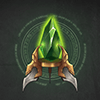
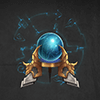
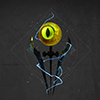
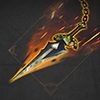
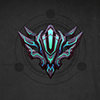

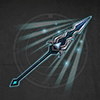
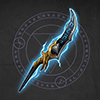
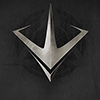
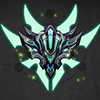
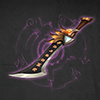
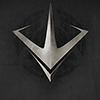

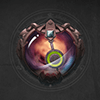
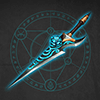
Thanks for the post! Hopefully Epic will optimize how cards drop so we can customize decks to our play styles and characters. I find I keep getting cards that don't match the equipment I like to use with the heroes I play.
Have you thought about putting up a post about card affinity? I'm still a bit confused on the different affinities work with each hero and cards.
Thanks :)
@bigred701, I actually plan to merge my 2 guides into 1 and add in all the gaps, it's quite a big task so it'll take a while, but basically, each hero as 1/2 affinities, as shown in their character profiles and the coloured diamonds on their portrait in the 'play' screen. These affinities determined which cards that hero can use. In terms of Equipment, you can only use an equipment with the same affinity as the hero, so you can't use a 'Growth' (green) card on a hero which doesn't have Growth as one of their affinities. In terms of upgrades, the same applies, but what a lot of people get confused with is that an affinity upgrade can be applied to 'universal' equipment, and universal upgrades can be applied to affinity equipment. The only thing affinities matter for is which heroes can use those cards, beyond that it doesn't matter. Hope I touched on everything you were confused about, feel free to put another comment if I missed anything!
First of all, thanks for the post, i had 30 poinst in 2 cards and i didn't even though about the power points... seems like i still have a lot to learn!
And second and last, i have a problem. I got a Madspore Shash card (50 physical area damage each second), and I made a tank deck to try it out (38 total cards). In-game, when i'm about to choose the deck i'm going to use, it shows Madsopre Sash is there, but when i choose the deck, It isn't there. It's not a points problem, since i had a card of 16 power points when fully upgraded, more expensive than the Madspore with its upgrades. I loose quite a lot of my lane pressure with this, and i don't find any post with deck "rules", so i don't know what am i doing wrong :(
@NakamaJust, Hi there.
This is a known issue. See what's officially stated about this:
UPDATE 5/12/2020 @ 11:00AM EDT: Madspore Sash and Radiant Mantle are again disabled. We received reports that the both cards were not properly functioning with the release of v25 and disabled them in play mid day yesterday. Sorry for the inconvenience, we're working on addressing them both. We will update when the cards have been re-enabled.
__________________________________________________ __________________________________________________
UPDATE 1:45PM EDT: The cards have been removed from play. You will see them in your Deck, but they will not be eligible for use in game. Make sure to replace them. Additionally we've removed the card Dreadfeast Relic due to instability issues.
Good Morning Paragon Community!
We're going to issue a hotfix later today that will disable Madspore Sash and Radiant Mantle. The cards will still appear in your Deck, but will not be usable once you enter a match. If you have those Cards in your Deck, you will need to replace them with another card.
Sorry for the inconvenience. There are a number of things we are still iterating upon with design and gameplay elements. Thanks for your patience!
-Chris_Attalus